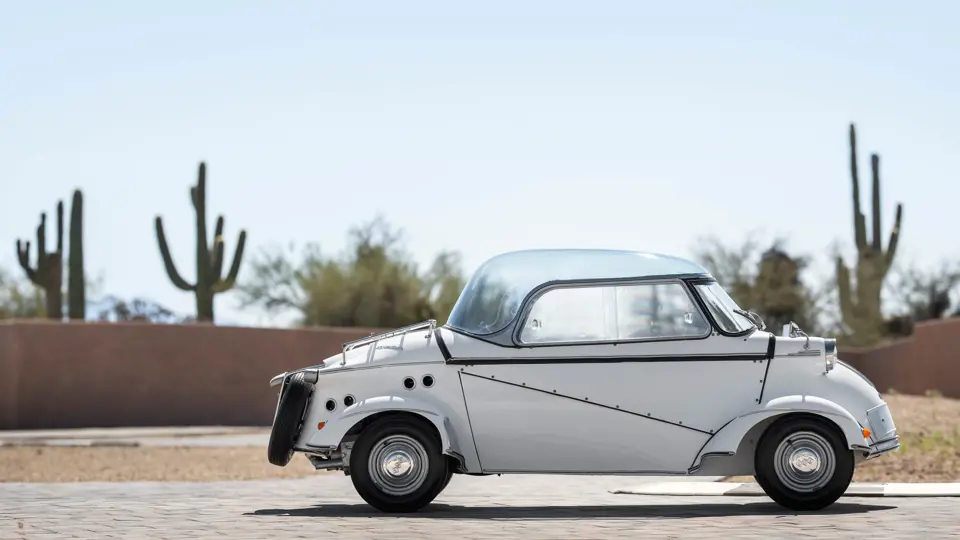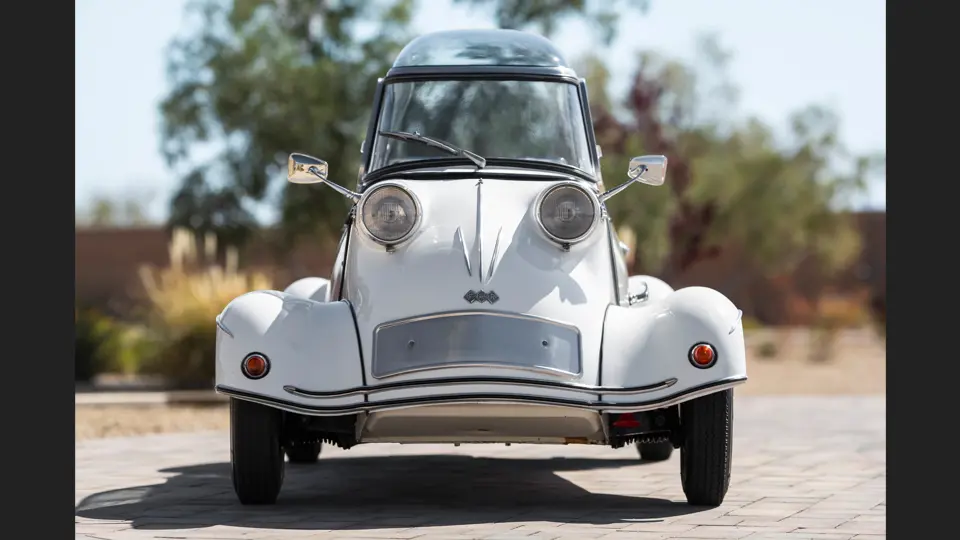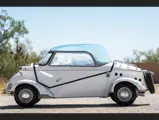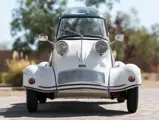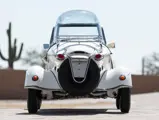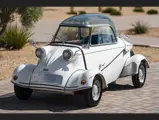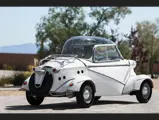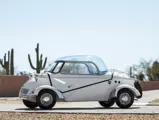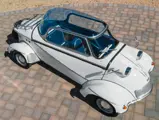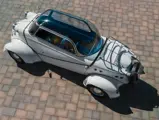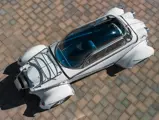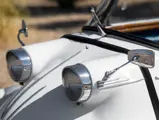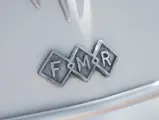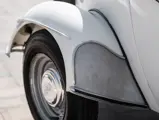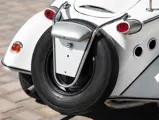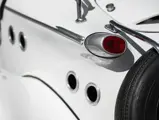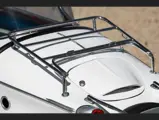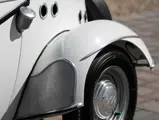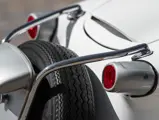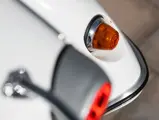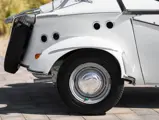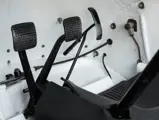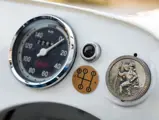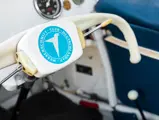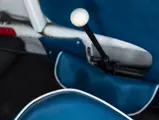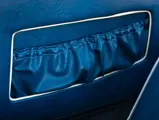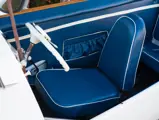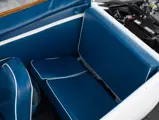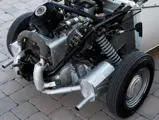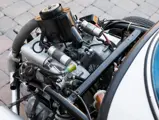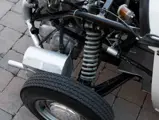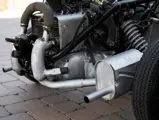
1958 F.M.R. Tg 500 'Tiger'
{{lr.item.text}}
$89,600 USD | Sold
{{bidding.lot.reserveStatusFormatted}}
- Among the fastest microcars ever built; capable of 78 mph
- Powered by a 20.5 hp, 494 cc F.M.R. two-cylinder, two-stroke
- Four-speed manual transmission with reverse
- One of 320 Tigers produced; believed to be one of 150 known survivors
One of the most well-known manufacturers of microcars is Messerschmitt. They were designed by German engineer Fritz Fend, who experimented with creating alternative forms of transportation; he found support from Willy Messerschmitt. Since Messerschmitt’s company was no longer permitted to produce airplanes after the war, he started looking for a new product to manufacture, and Fend and Messerschmitt settled on the concept of a vehicle with three wheels and tandem seating.
The first Messerschmitt vehicle was the KR 175, and it premiered at the Geneva Motor Show in 1953. The KR 175 garnered quite a following—one that continued to grow when Messerschmitt production transitioned to the new and improved KR 200 in the mid 1950s. However, the best was yet to come.
By 1957, Messerschmitt’s automotive branch was purchased by the German government, and the same style of cars continued to be produced under the name Fahrzeug und Maschinebau GmbH Regensburg, abbreviated to F.M.R. It is under this name that the company would produce their finest model yet, the Tg 500, also known as the “Tiger.” It was based on the monocoque of the Messerschmitt KR 200 three-wheeled car, however, the Tiger was equipped with four larger wheels, larger brakes, larger front suspension arms, larger headlamps, and, of course, a larger engine. The Tg 500 accelerated from rest to 60 mph in 28 seconds and had a top speed of 78 mph. Of the 320 examples of the Tiger produced, it is believed that only 150 survive.
The example offered here is finished in a white with white fenders, accented by chrome trim and rear fender stone guards. The Tiger rides on gray steel wheels with F.M.R. hubcaps. It is equipped with dual sideview mirrors, sliding windows, the classic “cheese dish” glass bubble roof, and rear-mounted trunk rack. A leather strap ensures the bubble roof is not over extended when opened. The interior offers passenger occupancy for two and is trimmed in blue with white piping, accented nicely by wood trim. The color-matched dash houses VDO instrumentation and the aircraft-style steering wheel features prominently.
Importantly, this Tg 500 is a running, drivable example of this rarely-seen “high performance” microcar. With its low production figures and large displacement specifications, the Tg 500 is arguably one of the most desirable microcars in existence.
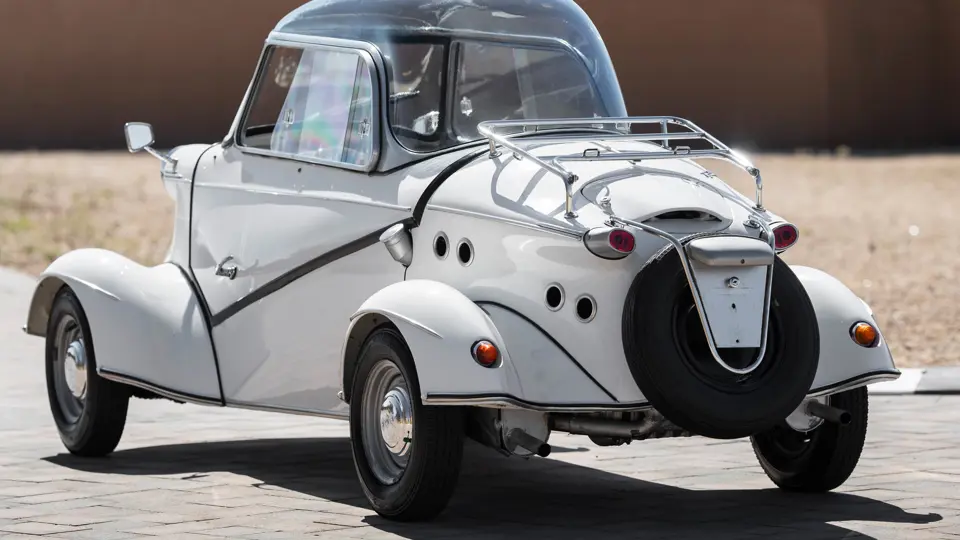
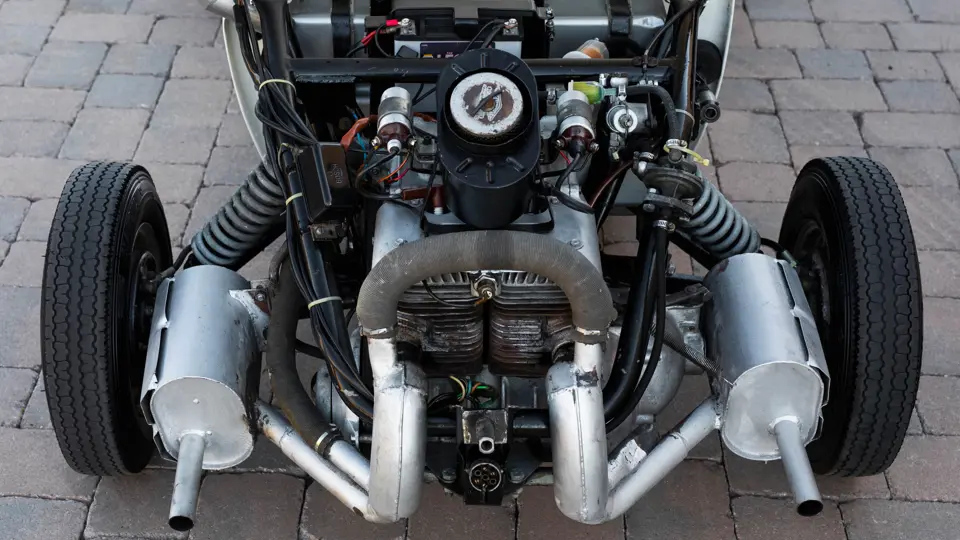


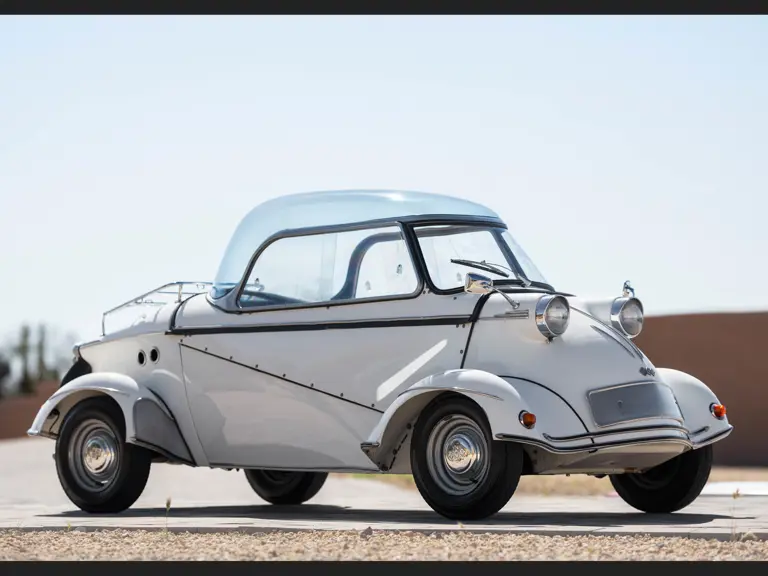
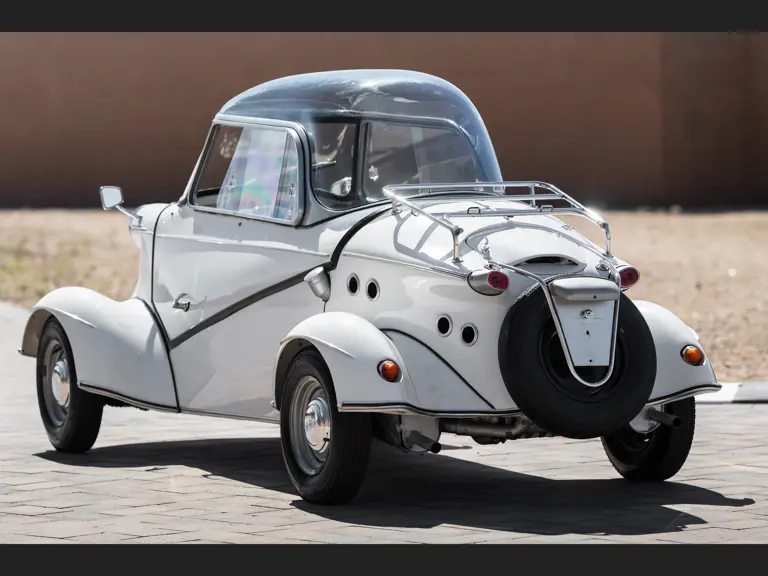
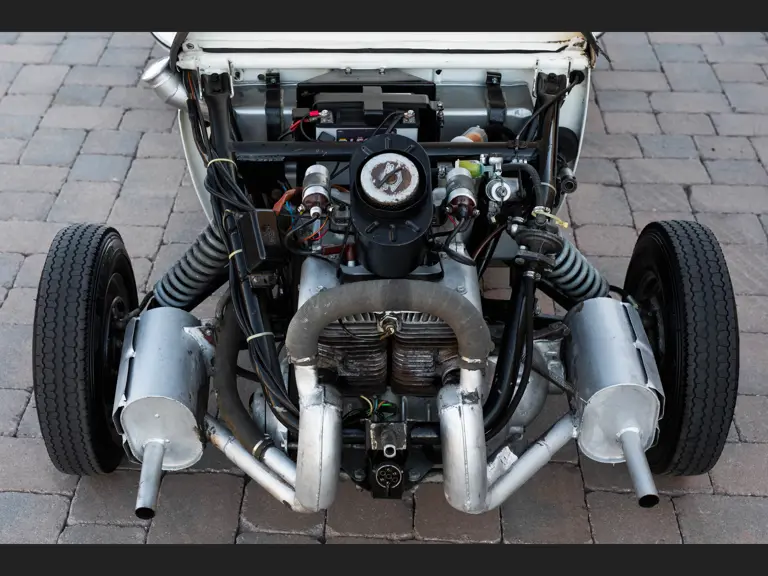
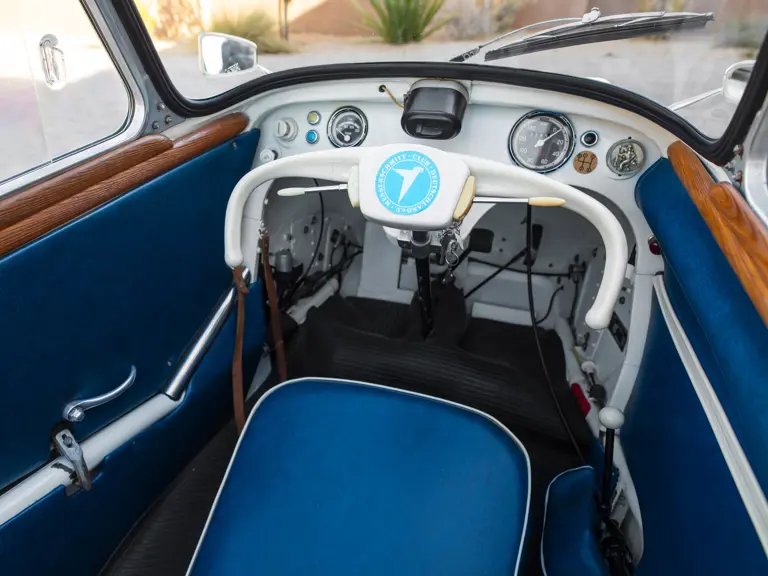


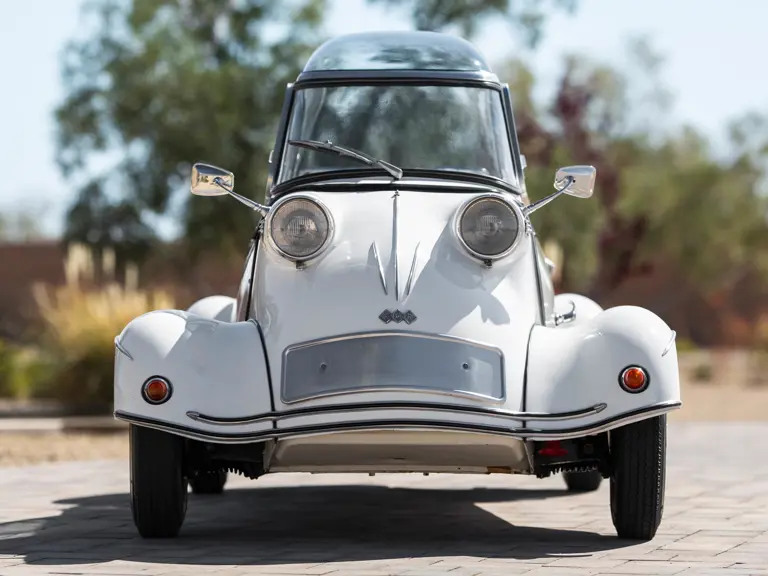



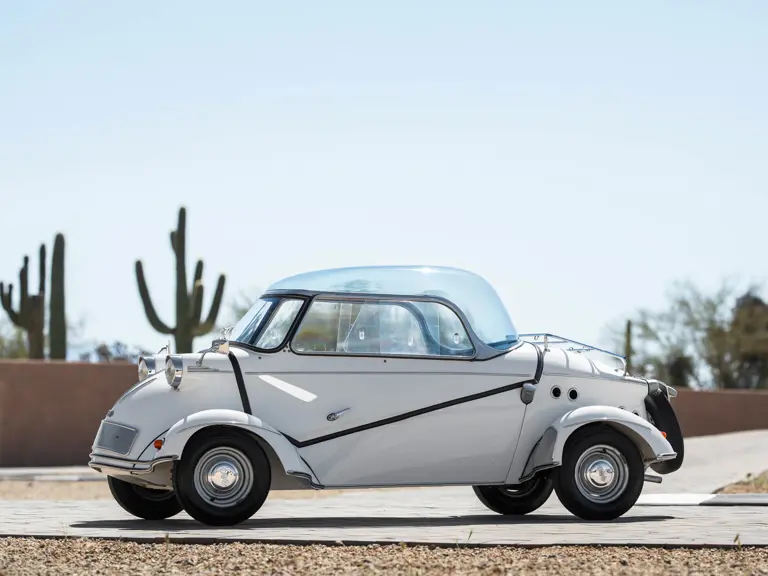
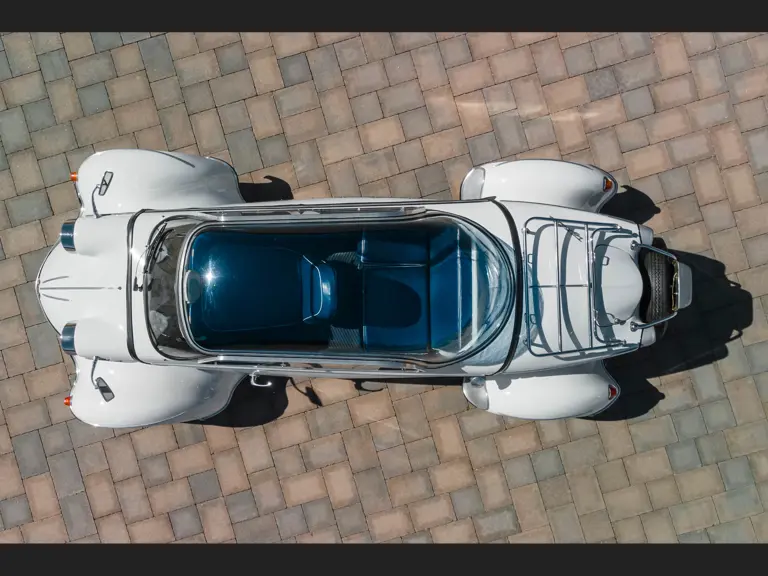
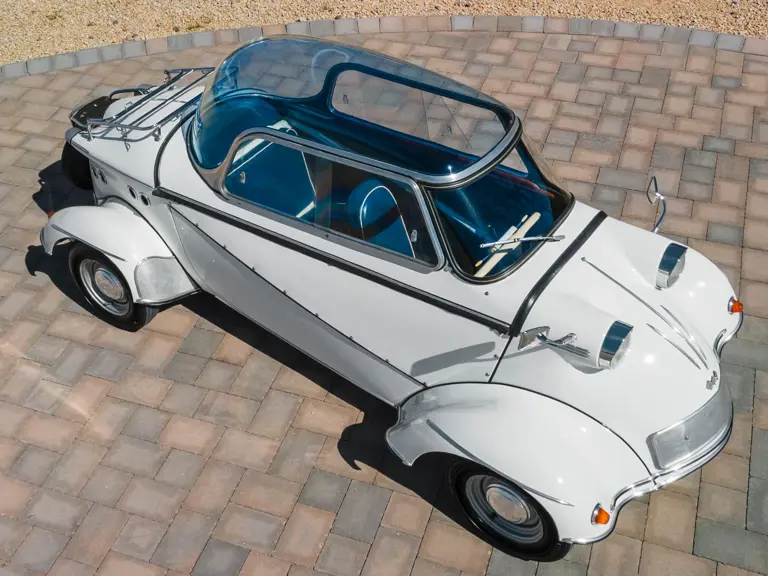
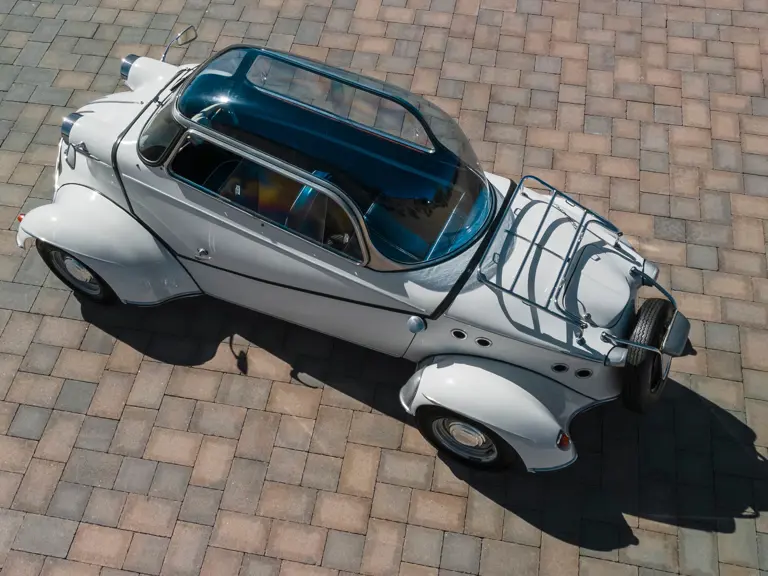
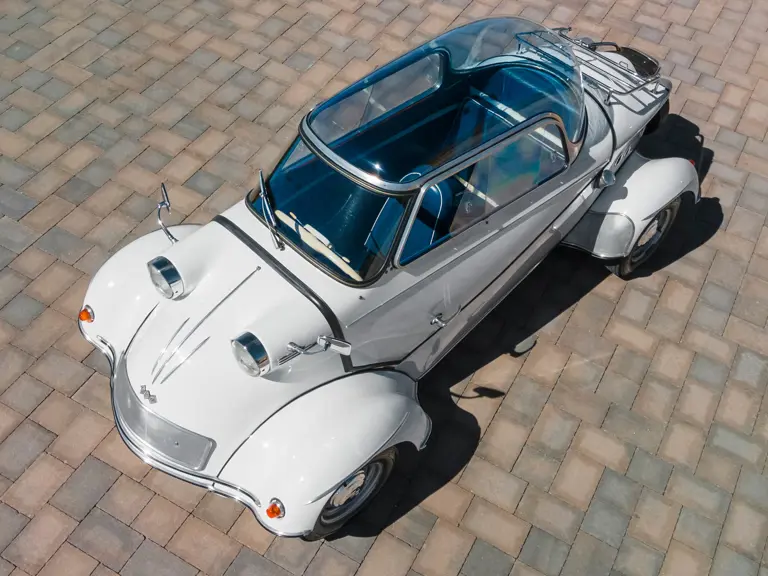
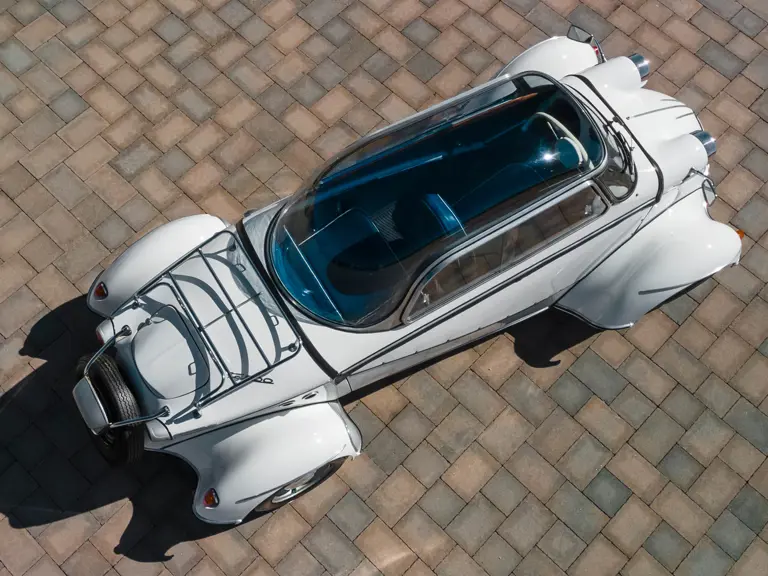




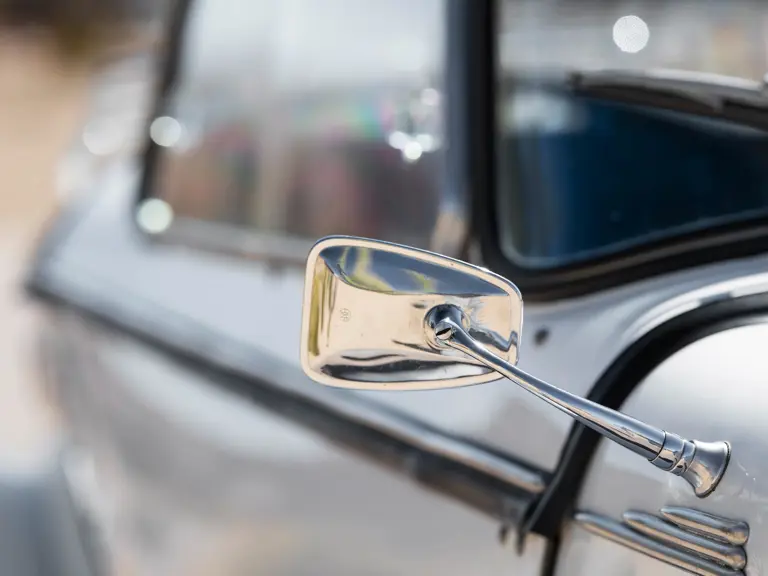
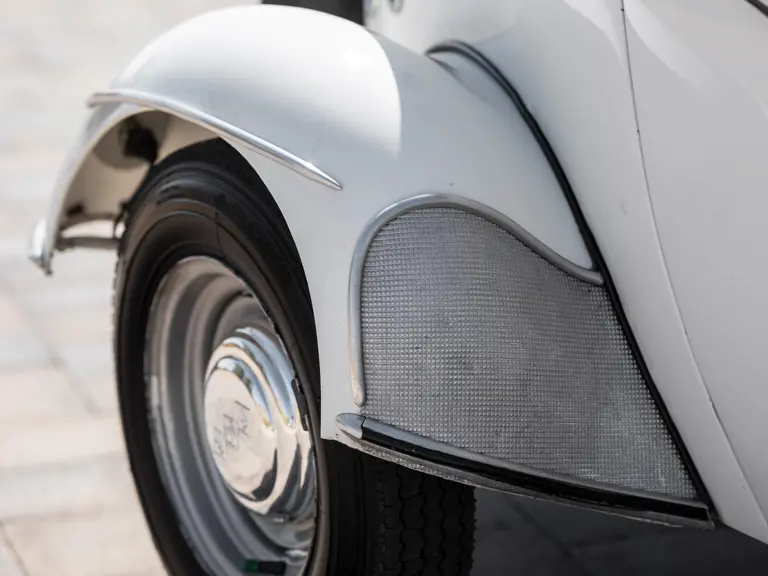
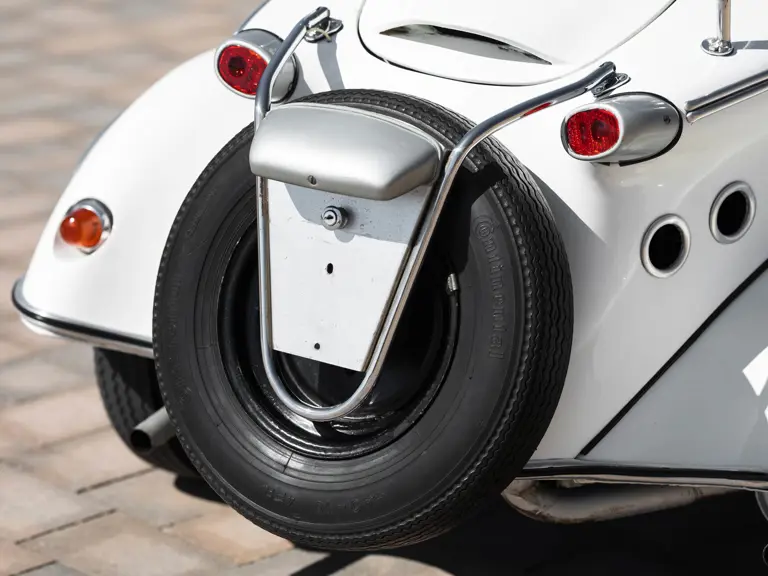
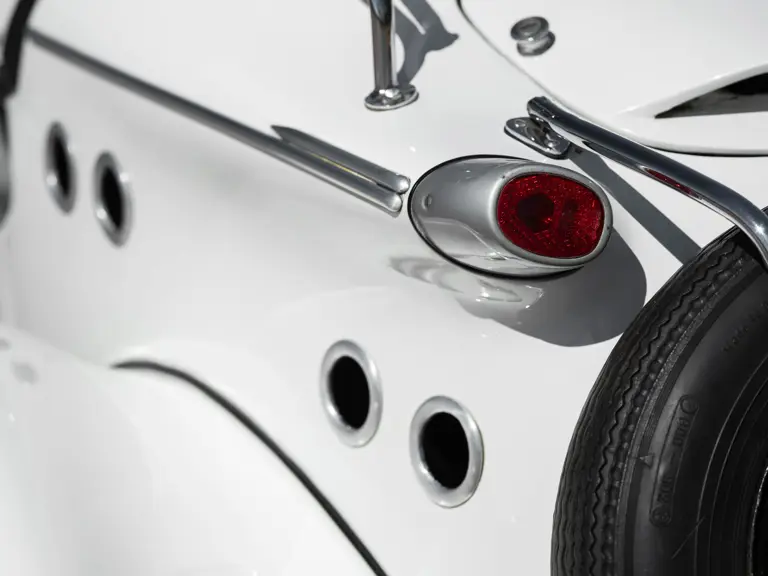
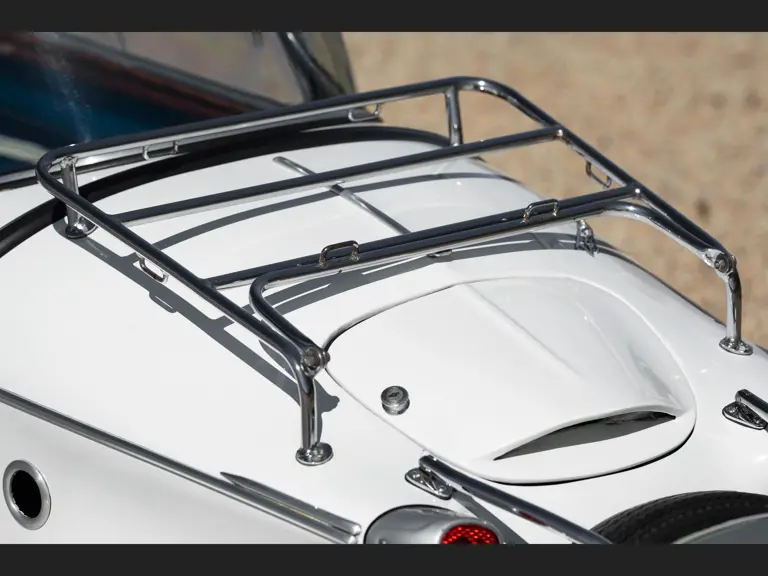
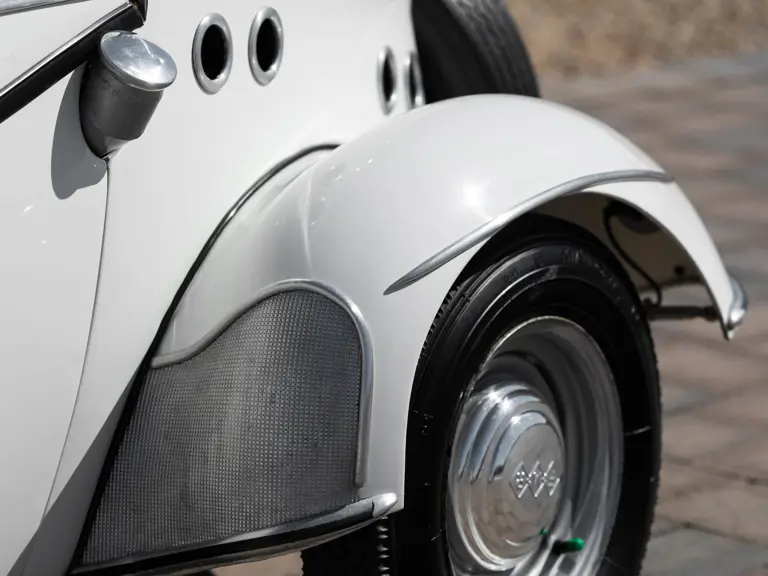

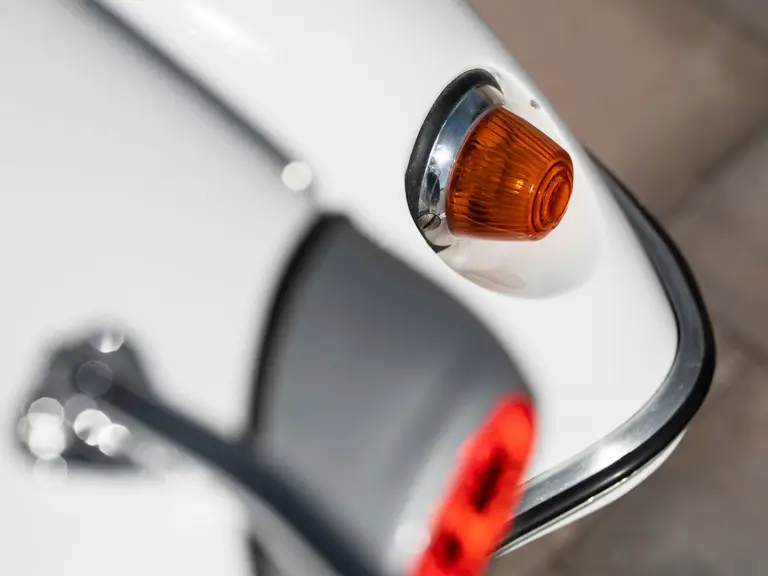
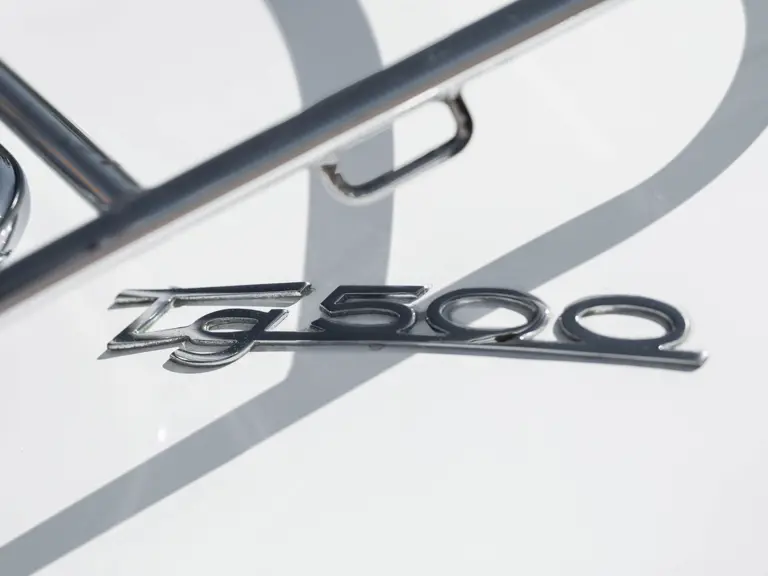
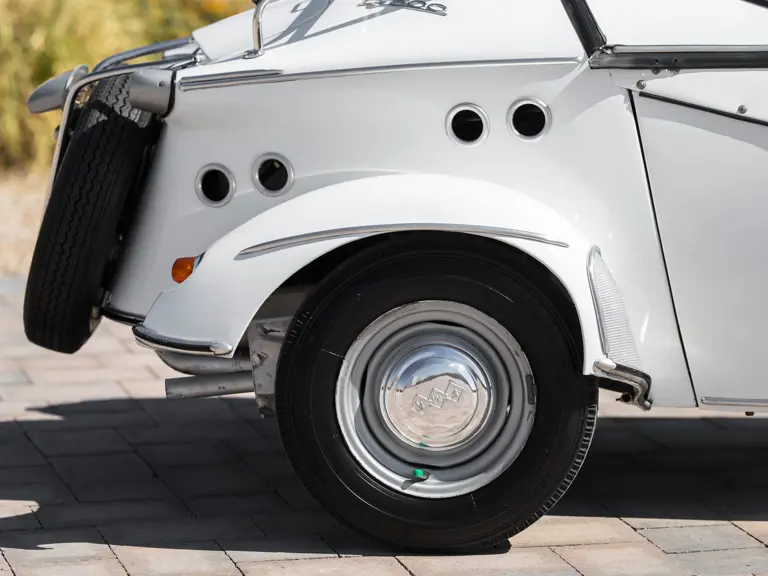
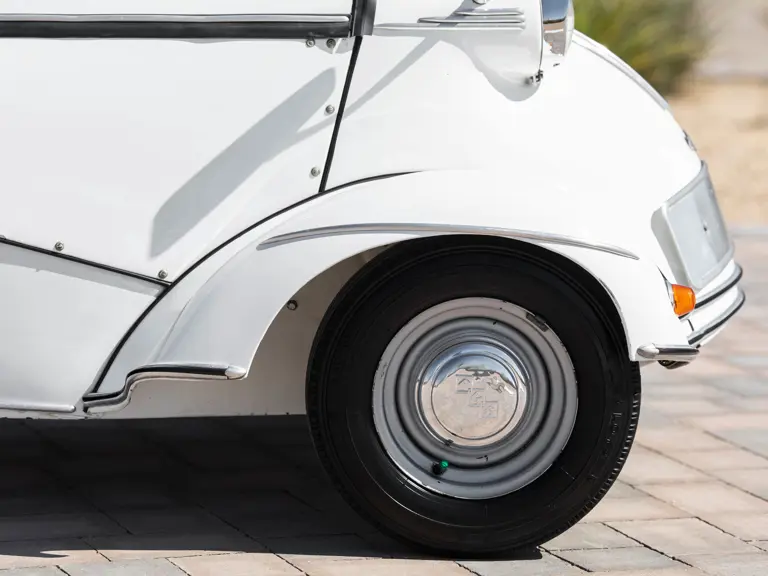
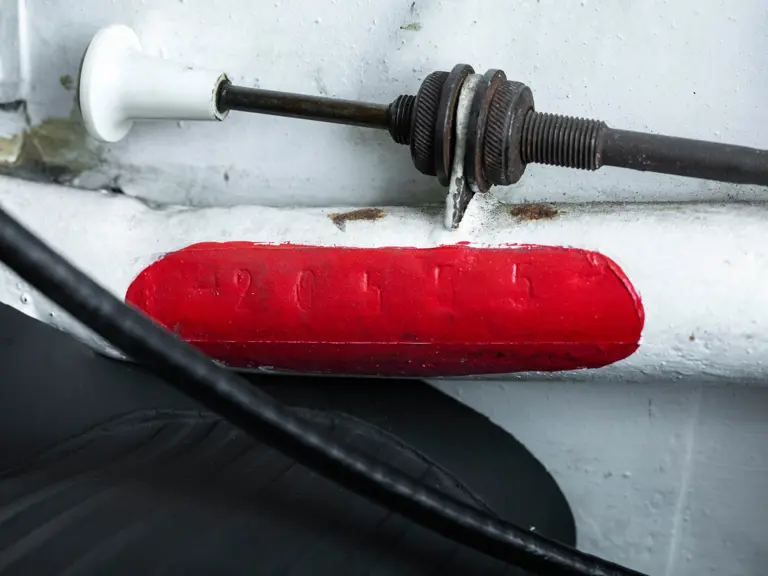
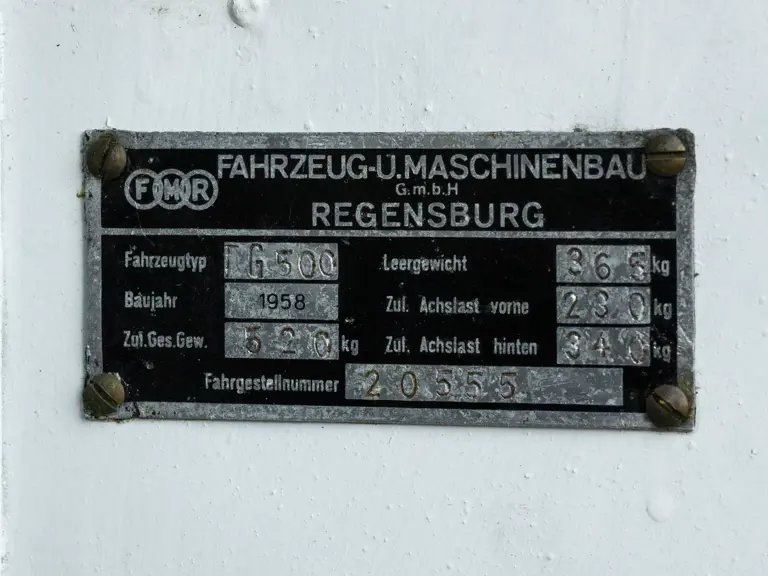

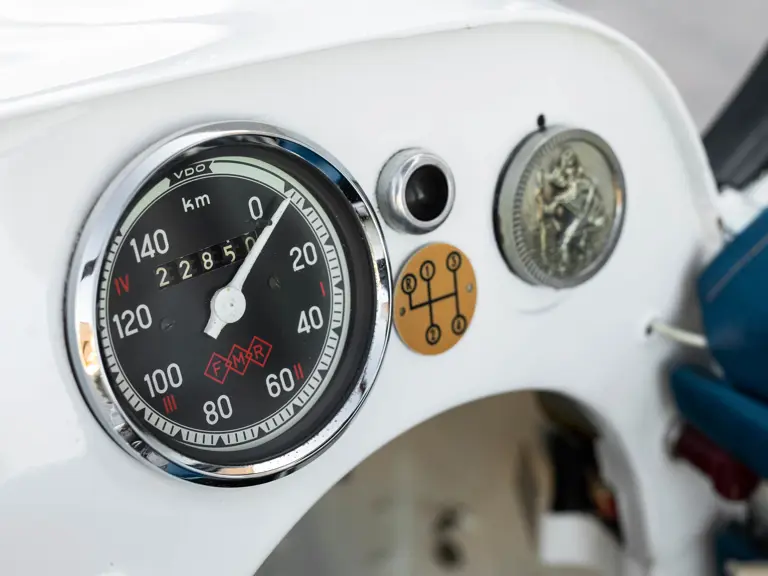
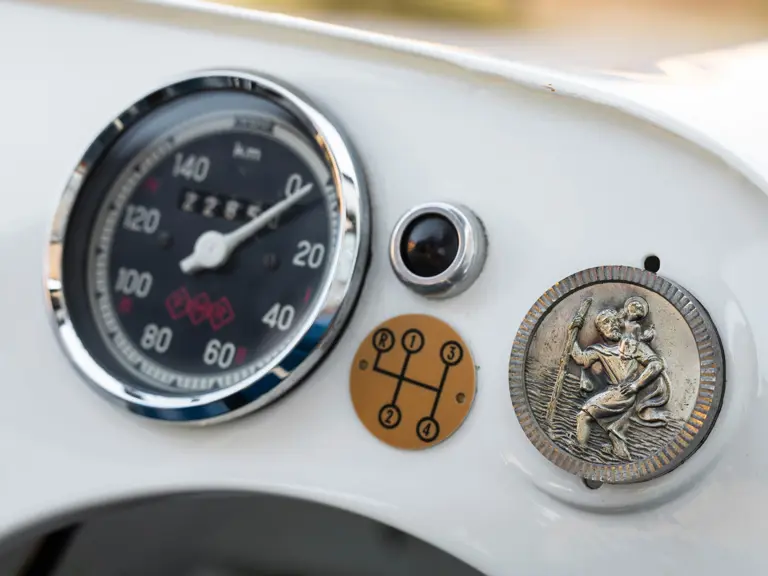
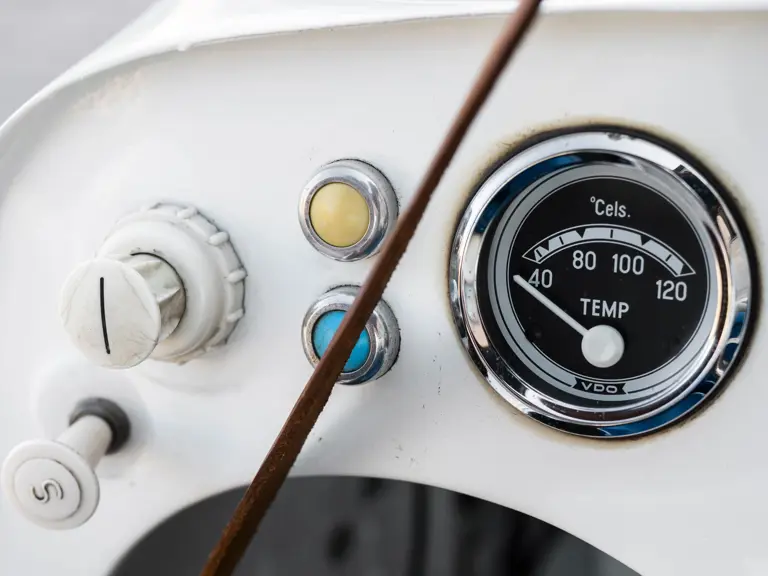
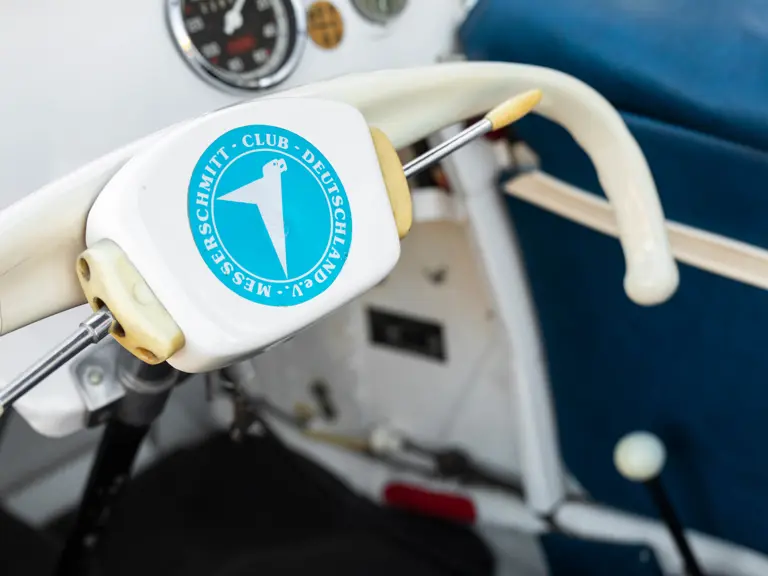

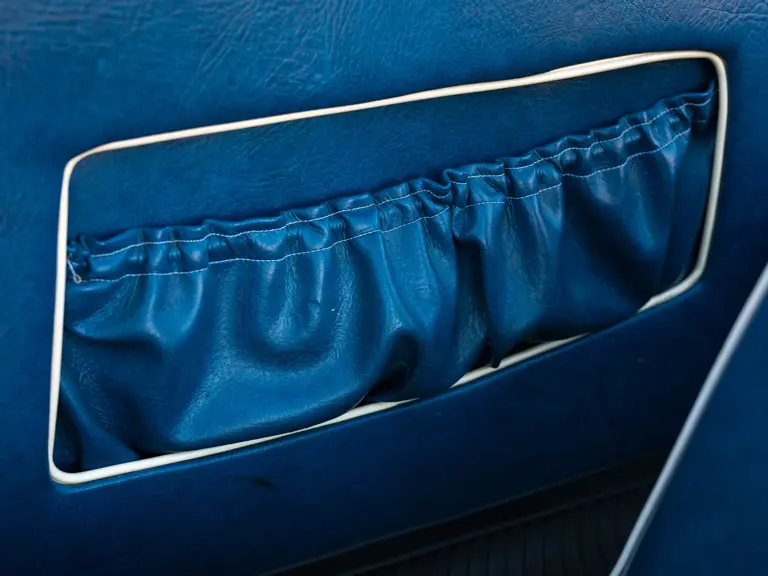
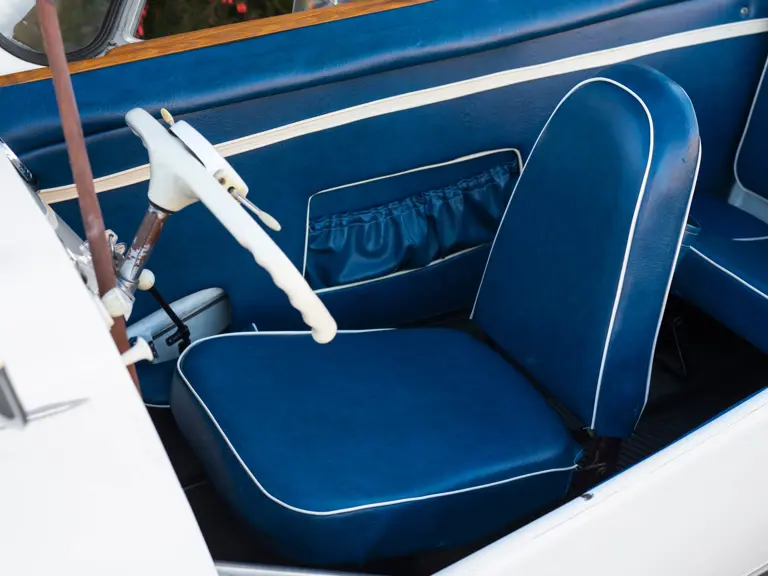
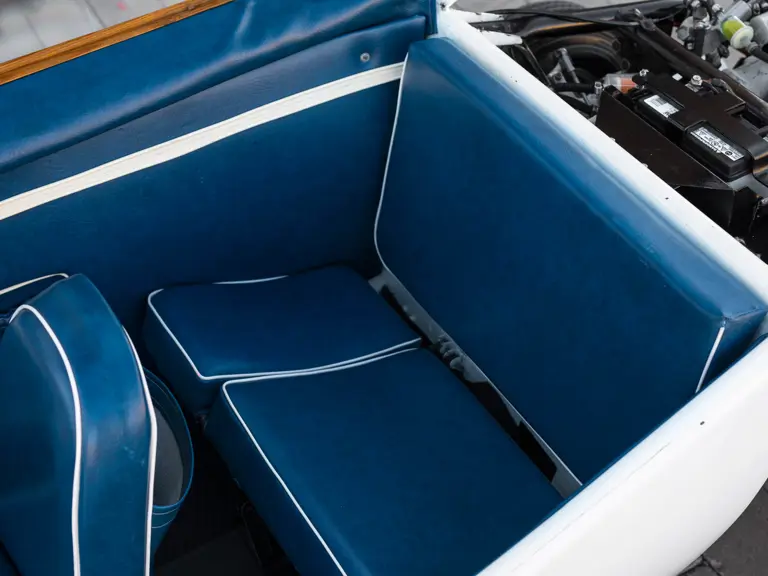
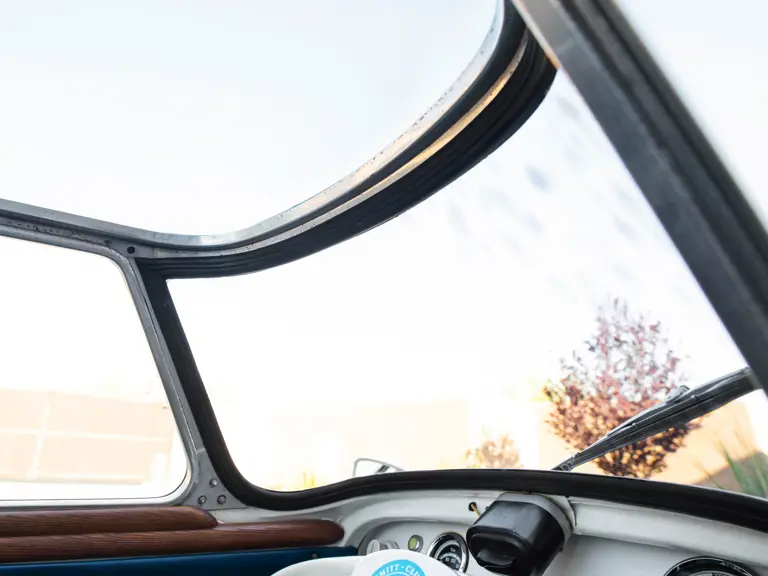

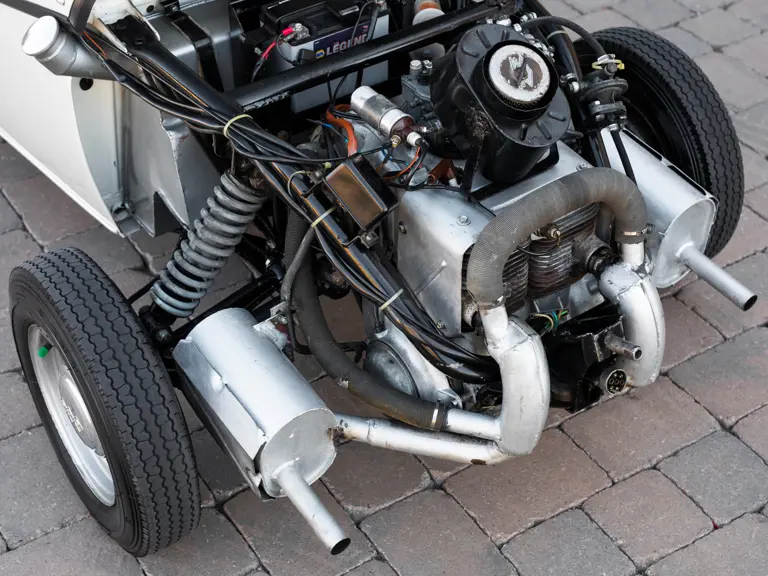
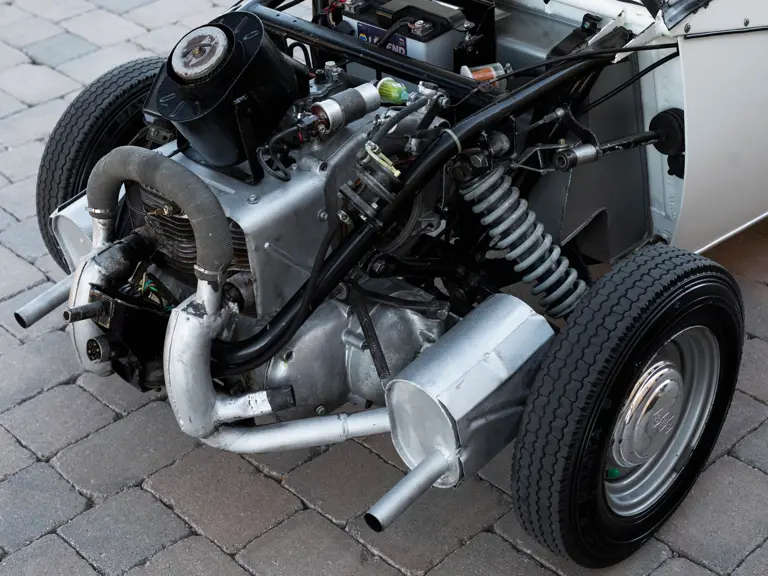
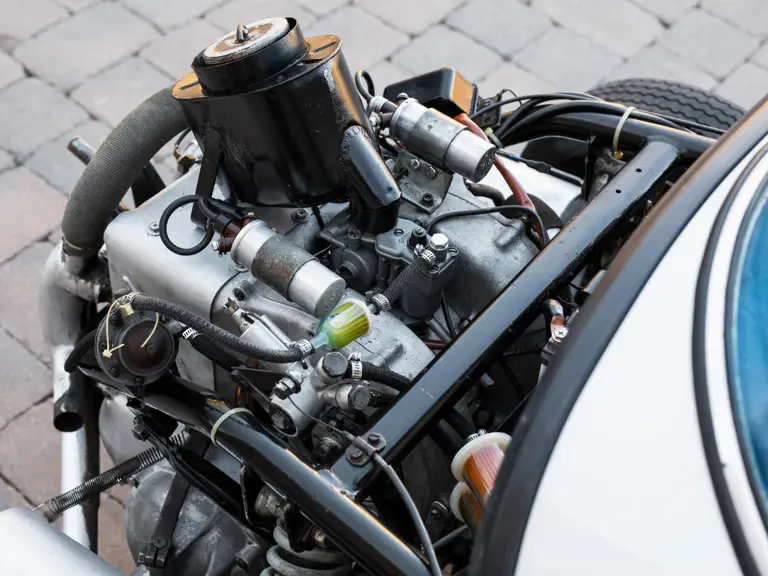

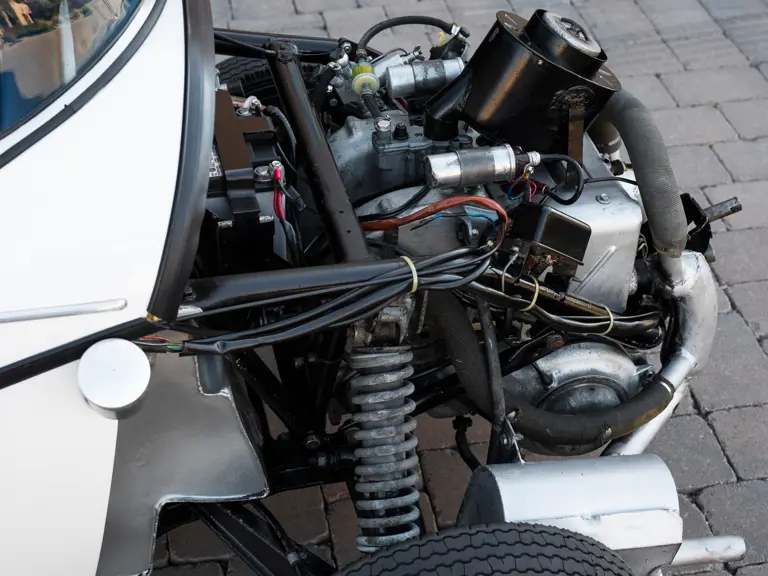
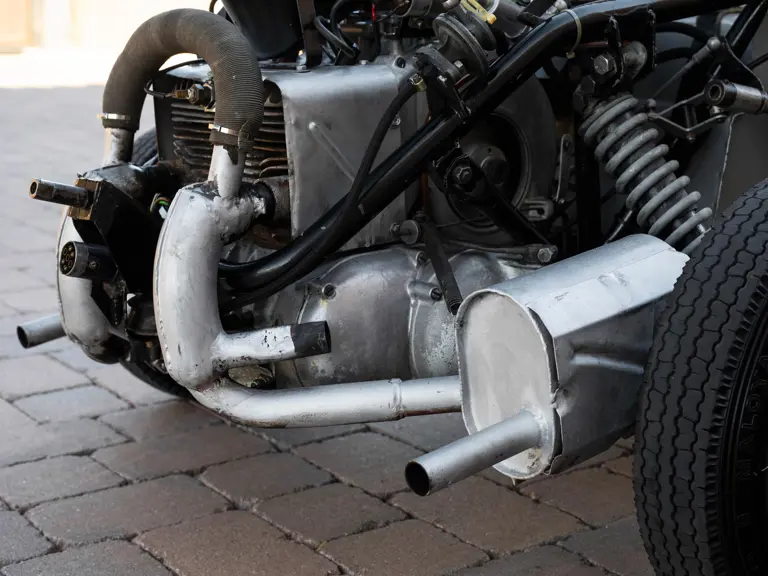
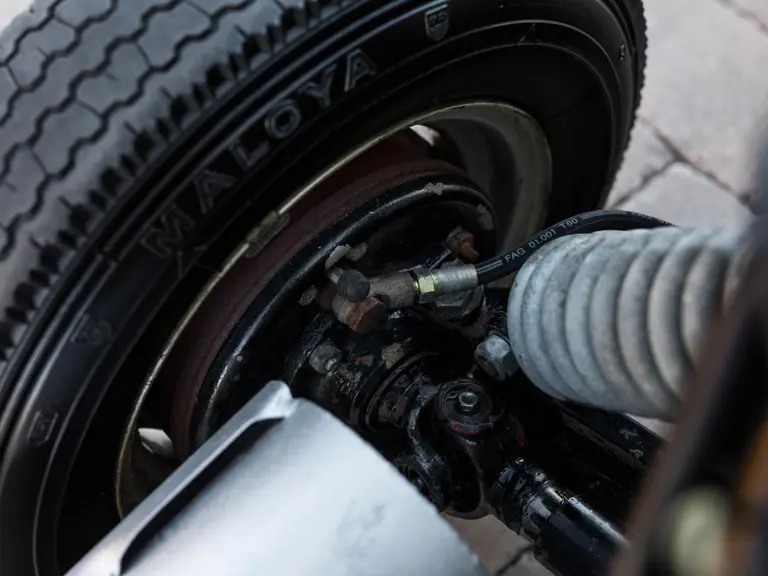
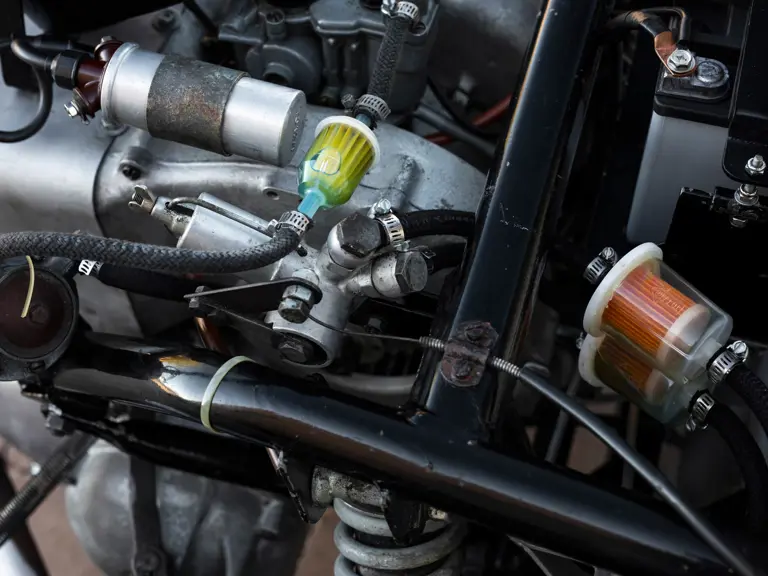
 | Amelia Island, Florida
| Amelia Island, Florida
